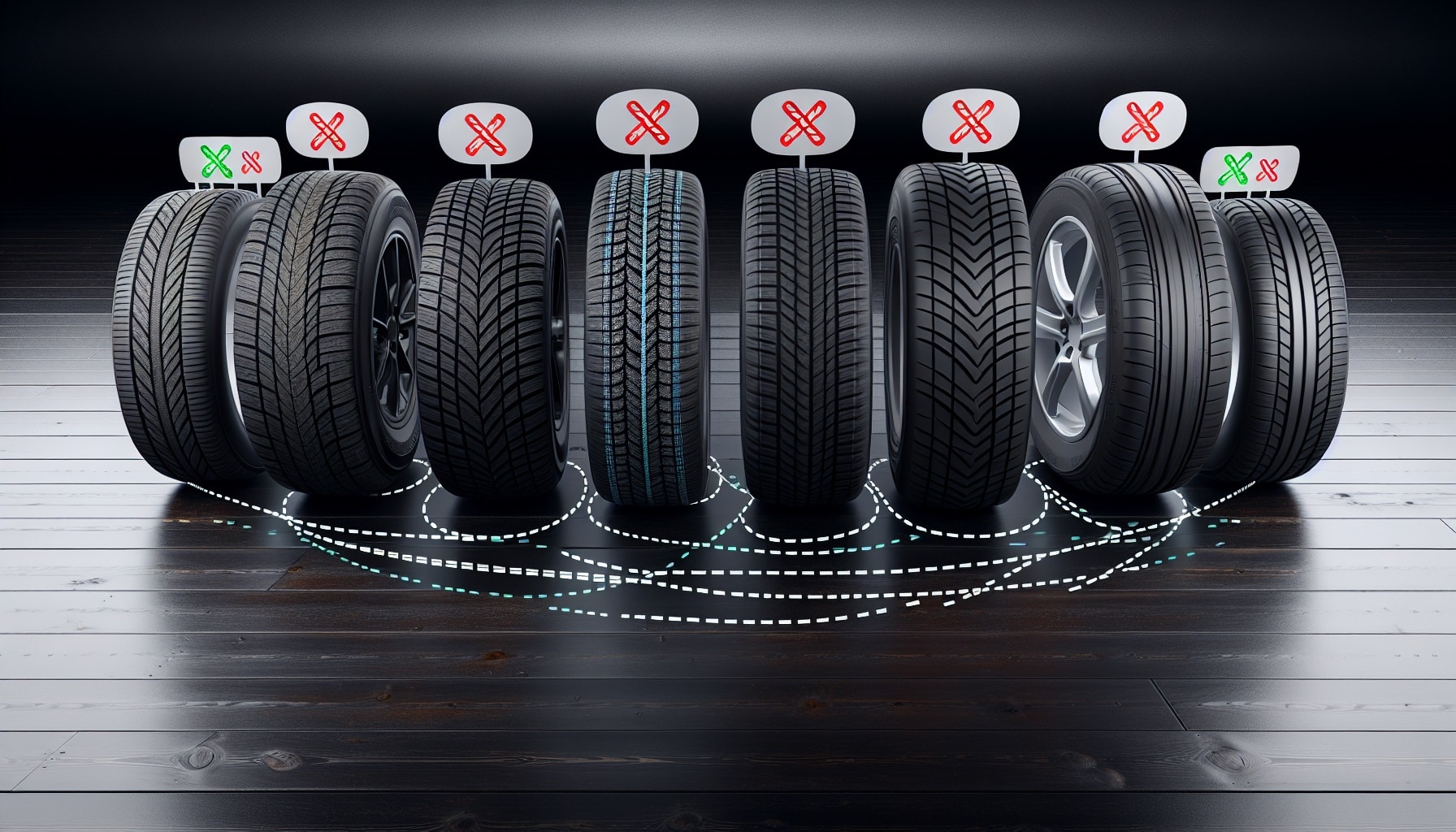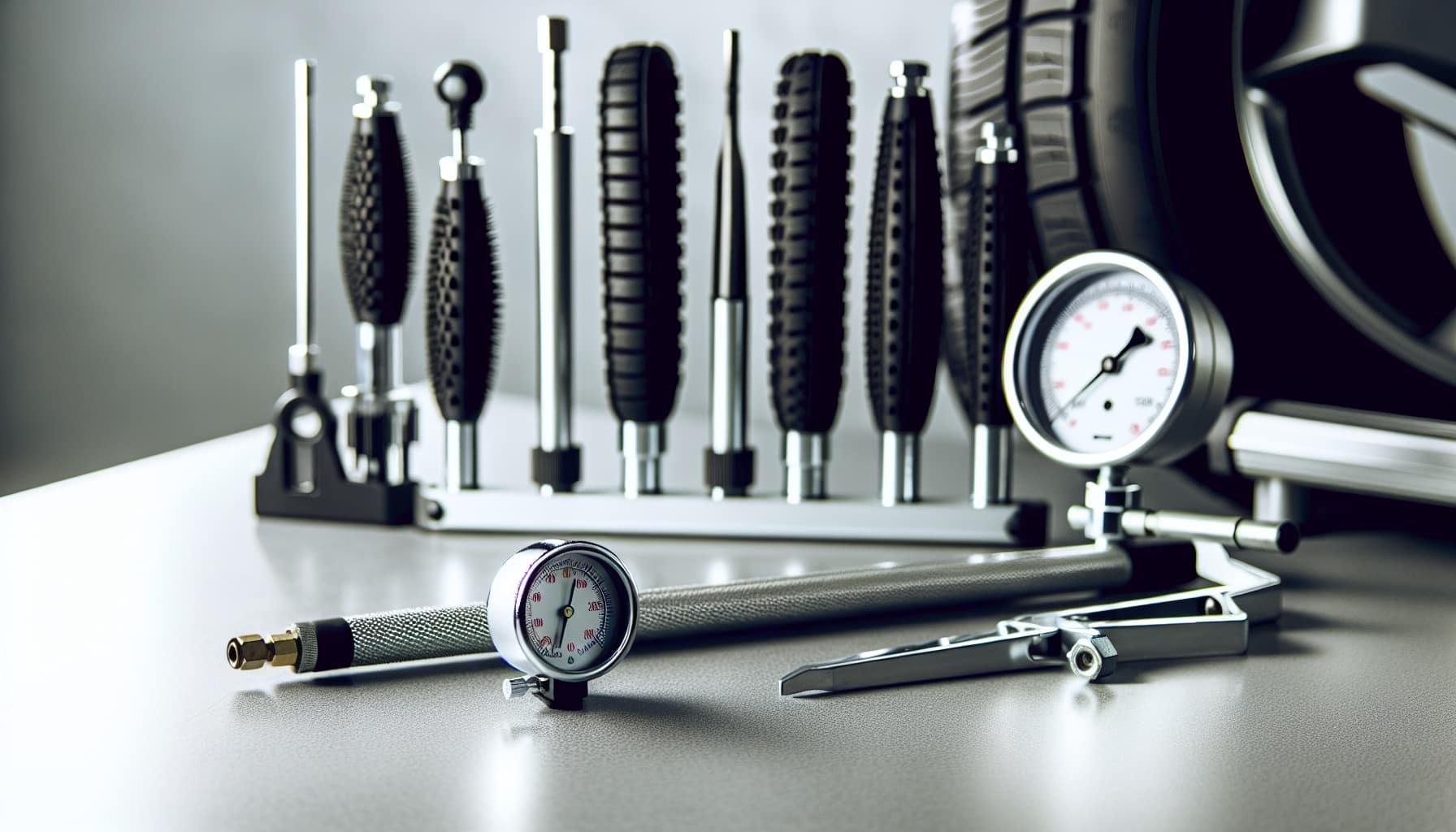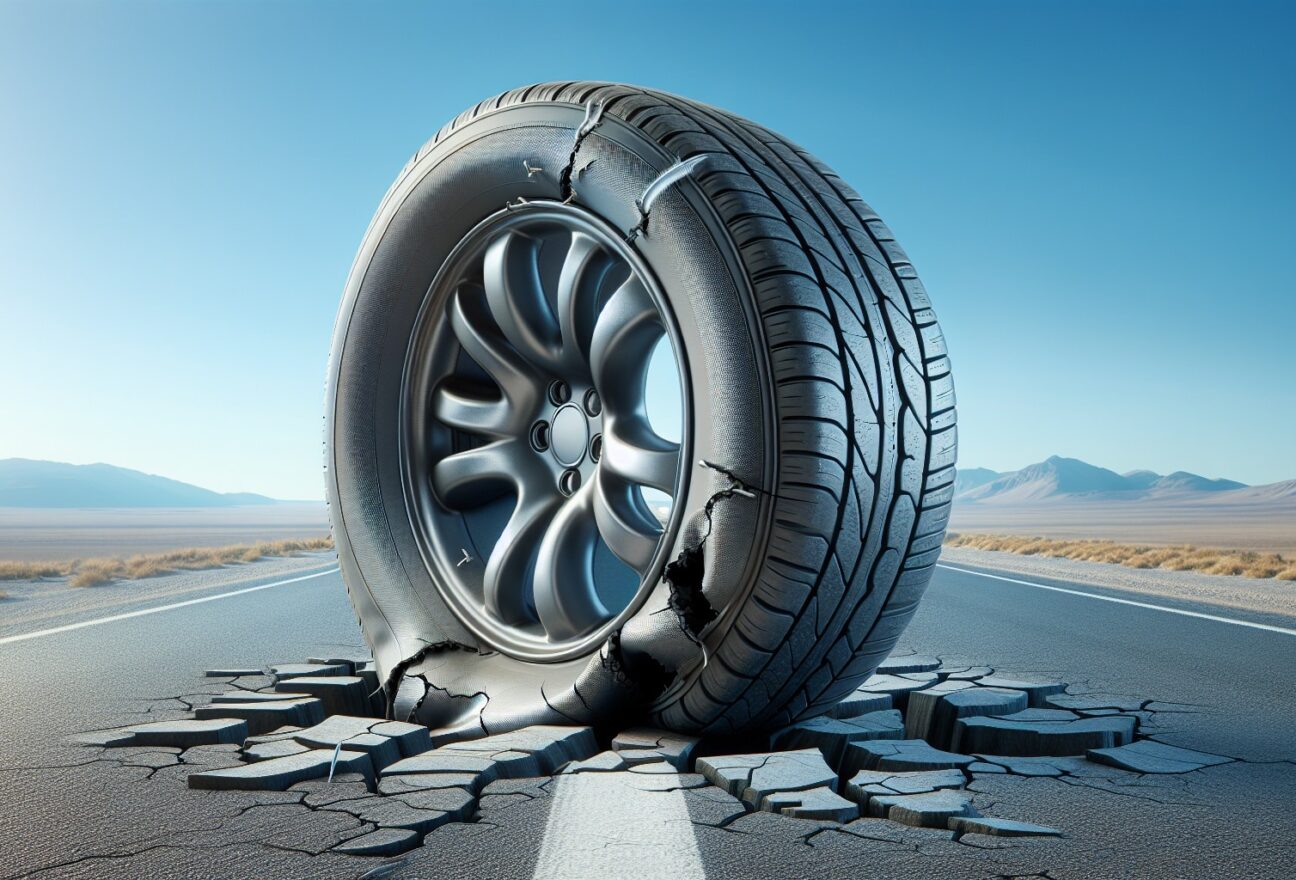When rogue nails or treacherous potholes threaten your tires and wheels, how do you ensure you’re covered? Tire and wheel protection plans offer that safety net, but with various options on the market, which is right for you? Learn the ins and outs of these plans directly—no fluff, just essential advice to secure your vehicle’s rounds without emptying your wallet.
Tire & Wheel Protection Overview
Tire and wheel protection plans cover repair or replacement costs resulting from road hazards, typically including unlimited repairs, mounting, balancing, and associated fees without a deductible.
Multiple types of protection plans are available, offering basic to enhanced coverage, inclusive of minor wheel repair and cosmetic damage, with the option to transfer the plan increasing resale value.
Additional benefits include roadside assistance services such as towing, battery service, emergency fuel, locksmith assistance, and minor mechanical aid to keep drivers safe and reduce hassle during tire-related incidents.
Compare The Best Tire & Wheel Warranty Price & Coveage
Unexpected tire damage can put a damper on your travels and your wallet. Tire & Wheel Warranties offer peace of mind by covering repairs or replacements in case of road hazards. But with various options available, choosing the right one can be confusing.
Understanding Tire and Wheel Protection
Tire and wheel protection plans aim to safeguard you from the repair or wheel replacement costs of your vehicle’s tires and wheels when they suffer damage from common road hazards like nails, glass, potholes, rocks, and debris. These plans typically offer unlimited repairs or replacement of a covered tire, covering the associated costs such as mounting, balancing, valve stems, environmental fees, and taxes.
Consider it as a safety net for your tires and wheels. Imagine driving with the peace of mind knowing that, should your tire succumb to a rogue nail or your wheel fall victim to a hidden pothole, you’re covered. That’s what tire wheel protection and wheel protection plans bring to the table.
The Basics of Tire and Wheel Protection
The primary coverage of a tire and wheel protection plan includes:
- Repair or replacement of damaged tires caused by a covered road hazard and resulting in structural damage
- Up to four tire replacements per covered vehicle
- Replacement costs of the Tire Pressure Monitoring System (TPMS) if damaged by a covered road hazard
This coverage ensures that drivers can have peace of mind while on the road.
Simply put, these plans aim to prevent you from being left stranded due to unexpected tire and wheel damage caused by road hazard tire incidents. They cover a range of road hazards and include various services to get you back on the road as quickly and safely as possible.
Benefits of Tire and Wheel Protection
Tire and wheel protection plans offer the following benefits:
- Safeguard your vehicle from unanticipated damage
- Offer peace of mind by covering costs without a deductible
- Provide savings on repairs that are often not covered by standard auto insurance or roadside assistance policies
- Especially beneficial for those with long commutes on poor road conditions
Additionally, the ability to transfer the protection plans to a new owner and get a full or pro rata refund adds to the vehicle’s resale value, while the Plus plan offers coverage for minor wheel repairs. It’s clear that these plans are not just about tire and wheel protection, but also about maximizing your vehicle’s value and minimizing your expenses.
Types of Tire and Wheel Protection Plans

A variety of tire and wheel protection plans are available to accommodate diverse needs and budgets. These plans encompass costs associated with:
- Mounting
- Balancing
- Valve stems
- Environmental fees
- Taxes linked to tire and wheel repairs or replacements
In addition, they provide coverage for the Tire Pressure Monitoring System (TPMS) to handle replacement costs due to damage caused by a covered road hazard. This offers added peace of mind for drivers.
Whether you’re a daily commuter, a weekend adventurer, or a road-trip enthusiast, there’s a protection plan designed just for you. The key is to understand the different types of protection plans available and choose the one that best fits your needs.
Basic Coverage
Basic tire and wheel protection plans are constructed to mend or substitute tires and wheels damaged by usual road hazards, such as nails, glass, and potholes. These protection plans typically cover the expenses of mounting, balancing, and installing valve stems for replacement tires, in addition to environmental fees and taxes that arise during tire or wheel repair or replacement.
What’s even better, most basic protection plans do not require a deductible, offering customers the convenience of receiving service without incurring additional costs. It’s a simple and straightforward plan that covers the basics, ensuring you get the necessary protection without any fuss.
Enhanced Coverage
For those desiring more extensive coverage, enhanced Tire and Wheel Protection plans are an ideal choice. The enhanced Plus plan includes coverage for minor cosmetic damage to wheels, a feature not typically offered by standard plans. Some enhanced protection plans also cover cosmetic damage to valve stems, which can be an unexpected expense if damaged.
Moreover, enhanced plans often ensure that there are no deductibles for the services provided, making the plan more economical. It’s an all-inclusive plan that goes the extra mile to provide you with the best protection and services possible.
Roadside Assistance Services

Nobody anticipates getting stranded on the side of the road, but it does occur. That’s where roadside assistance services come into play. Towing services are available, with coverage for expenses up to $100 per occurrence for damages caused by a covered road hazard, helping you manage towing costs.
But it’s not just about towing. Roadside assistance services go beyond that, including:
- Battery service to jump-start your vehicle
- Emergency fuel service to deliver enough fuel for your vehicle to reach the nearest gas station if it runs out
- Locksmith service to help gain entry to your vehicle if the keys are locked inside
- Minor mechanical first aid to enable the vehicle to proceed under its own power
Flat Tire Assistance
A flat tire is one of the most prevalent roadside mishaps. When this happens, roadside assistance initially assesses the situation to determine the best course of action for the flat tire. If a spare tire is available, roadside assistance will replace the flat tire with the spare.
But what if there’s no spare tire? No worries. In such cases, your vehicle is towed to a tire repair shop. It’s a comprehensive service designed to get you back on the road as quickly and safely as possible.
Other Roadside Assistance Features
Roadside assistance extends beyond merely tire and towing services. It includes lockout services, offering help if you get locked out of your car and may assist in covering locksmith service expenses. In some cases, alternate transportation may be provided while your vehicle is being serviced.
If your vehicle breaks down, roadside assistance provides mechanical first aid, providing minor adjustments to enable the vehicle to proceed under its own power. It’s like having a mechanical support team at your disposal, ready to assist whenever and wherever you need it.
Factors to Consider When Choosing a Plan
Having understood what tire and wheel protection plans entail, how do you select the one that’s best for you? Consider the following factors when choosing a plan:
- The extent of coverage needed based on your location, vehicle type, and driving conditions
- Assessing your vehicle’s needs
- Evaluating the costs and benefits of different plans
By considering these factors, you can make an informed decision and select the tire and wheel protection plan that is best suited for you.
Assessing Your Vehicle’s Needs
When assessing your vehicle’s needs, factors such as driving frequency, road conditions, and vehicle type come into play. GMC Tire and Wheel Protection plans are available for new, pre-owned, and leased vehicles with terms ranging from 1 to 7 years and no mileage restrictions.
So whether you’re driving a brand-new sports car or a pre-owned SUV, commuting daily in the city or venturing off-road on weekends, there’s a protection plan that fits your needs.
Evaluating Costs and Benefits
Understanding the specifics of each plan is vital when weighing the costs and benefits of tire and wheel protection plans. Plans typically cost between $60 and $90 per year for all-tire coverage or from $10 to $30 per tire for replacement coverage.
Understanding the terms of a plan is crucial, including:
- what is covered
- the duration of coverage
- mileage limitations
- if there is a deductible or exclusions
It’s about making an informed decision that brings you the most value and protection.
Tips for Maintaining Your Tires and Wheels

While tire and wheel protection plans offer coverage for unanticipated road hazards, proper maintenance of your tires and wheels is of equal importance. This includes:
- Maintaining proper tire pressure
- Rotating your tires regularly
- Using season-appropriate tires
- Ensuring punctures are repaired correctly.
Proper maintenance not only extends the lifespan of your tires and wheels but also ensures optimal vehicle performance and safety. It’s a proactive way to prevent potential issues and prolong the need for repairs or replacements.
Regular Inspections and Maintenance
Regular inspections and maintenance form a crucial aspect of tire and wheel care. This includes regularly checking tire pressure, as improper tire inflation can lead to increased fuel consumption and a shortened tire lifespan, with 70% of vehicles having at least one under-inflated tire.
Rotating your tires between 5,000 to 8,000 miles ensures even wear and contributes to balanced handling, while consistent tire balancing can prevent vibrations and further extend tire longevity.
Performing yearly wheel alignments can help maintain correct vehicle handling and minimize uneven tread wear resulting from everyday driving conditions.
Safe Driving Practices
Adhering to safe driving practices is another key aspect of tire and wheel maintenance for your vehicle’s tires. Avoiding potholes, sharp objects, and other road debris is crucial in preventing tire damage and potential blowouts. Staying clear of curbs while parking can reduce the risk of sidewall damage or wheel misalignment.
Maintaining proper tire inflation according to the manufacturer’s specifications ensures optimal tire performance and longevity. In severe weather conditions, reducing speed and maintaining greater distances between vehicles can ensure better control and prevent hydroplaning or loss of traction.
Summary
In summary, tire and wheel protection plans provide a safety net for your vehicle’s tires and wheels, covering unexpected damages from common road hazards. They offer peace of mind, cost savings, and increased vehicle resale value.
Always check tire and wheel warranty reviews. Usually if a tire and wheel warranty is incredibly cheap, it is because the company denies a lot of claims.
Choosing the right plan involves assessing your vehicle’s needs and evaluating the costs and benefits of different plans. And while these plans provide coverage for unexpected incidents, regular maintenance and safe driving practices are crucial in preventing potential issues and extending the lifespan of your tires and wheels. It’s about taking care of your vehicle, so it takes care of you.
Frequently Asked Questions
What does tire and wheel protection mean?
Tire and wheel protection can cover the cost of repairing or replacing damaged tires or wheels caused by road hazards such as potholes or debris. It can also provide roadside assistance and alternate transportation while your car is out of service.
Does wheel and tire protection cover curb rash?
No, wheel and tire protection typically does not cover curb rash, as it is considered a road hazard rather than a mechanical issue. It’s important to carefully review the coverage details before purchasing.
Does Tesla offer tire and wheel insurance?
Yes, Tesla offers a tire protection plan that covers tire and wheel repairs and replacements caused by typical road hazards. It must be purchased within the first 7 days or 100 miles of ownership.
How does tire insurance work?
Tire insurance provides coverage for damage caused by road hazards such as glass, metal, potholes, debris, and blowouts, with 100% coverage for approved tire and wheel damages. Some plans have limitations based on time, mileage, or a set dollar amount, and it’s essential to be aware of what is covered and if there is a deductible.
What is included in roadside assistance services?
Roadside assistance services typically include towing, battery service, emergency fuel, locksmith service, and mechanical first aid for disabled vehicles. These services can help you in various emergency situations.

